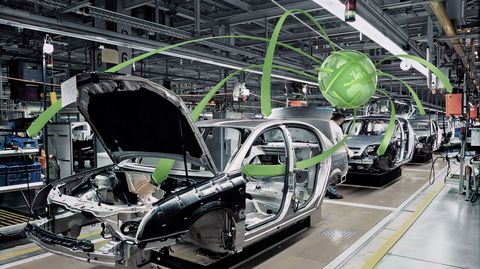Understanding preferential origin calculation: what firms need to know
With over 500 free trade agreements and other beneficial trade rules around the world that can offer businesses relief on a range of customs duties, it can be challenging to identify exactly what trade incentives a business may be able to take advantage of.
Among the most complex issues for many firms is navigating rules of origin, particularly when some components of manufactured goods may be eligible for preferential treatment. In the EU, for example, goods with preferential origin status are able to receive certain tariff benefits, so understanding exactly which goods qualify for this will be essential for firms to minimize tax bills and develop the most cost-effective supply chains.
What is preferential origin?
Preferential origin is a status defined, e.g. by the European Commission for the EU-countries, that applies to goods originating from specified countries and territories that have trade agreements with the EU and which meet certain criteria. In general, these requirements are:
- For the product to be manufactured from raw materials or components which have been grown or produced in the beneficiary country; or
- For it to have undergone a certain amount of working or processing in the beneficiary country.
Goods that meet either of these criteria are considered to be 'originating' and as such are eligible for tariff relief. In general, this means reduced or zero duties are applied to these products.
The challenges of preferential origin calculation
It is important to note that preferential origin is not always the same as the country of origin. This means businesses cannot assume that goods will be able to obtain preferential origin status automatically just because they come from the right territory.
There are many factors that may need to be considered before obtaining tariff relief. For example, some trade agreements may have exemptions for some categories of goods, while for many manufactured items, a certain percentage of parts must come from a specific origin in order to be eligible.
Exact rules of this are also likely to differ between jurisdictions. For example, a product that contains 30 percent parts from a certain country may be able to claim preferential origin in one territory, but in another it may need to have 40 percent of components in order to gain the same status.
Proving the correct country of origin
When claiming preferential origin for an item, businesses will often be asked to provide proof that the goods meet the requirements. In the EU, this is generally done using a self-certification system that allows the trader to declare that the goods are of preferential origin, using an export invoice, packing list or other trade documents. Records of these must be kept in the event of an audit.
How the right software helps ensure accuracy for customs
The first step in determining whether or not a product is eligible for preferential origin will be to ascertain the correct HS code of the item. This stands for Harmonized System and is an international standard for classifying imports and exports.
Once identified, using advanced FTA software can tell a business whether or not its products will be eligible for preferential origin status, based on the particulars of the trade agreement between the relevant countries.
This can offer enterprises a much faster, more efficient solution for determining preferential trade origin than manual processes, as well as ensuring accuracy. Automated processes can calculate the exact level of tariff relief for individual goods and for product ranges. Specialist software can also submit documentation to authorities and keep full records for auditing purposes to ensure businesses remain fully compliant with local laws.

